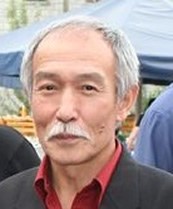Tatar, Khakass in Uzbekistan

Photo Source:
Anonymous
|
Send Joshua Project a map of this people group.
|
| People Name: | Tatar, Khakass |
| Country: | Uzbekistan |
| 10/40 Window: | Yes |
| Population: | 500 |
| World Population: | 62,800 |
| Primary Language: | Khakas |
| Primary Religion: | Christianity |
| Christian Adherents: | 55.00 % |
| Evangelicals: | 1.00 % |
| Scripture: | New Testament |
| Ministry Resources: | Yes |
| Jesus Film: | Yes |
| Audio Recordings: | Yes |
| People Cluster: | Ural-Siberian |
| Affinity Bloc: | Turkic Peoples |
| Progress Level: |
|
Introduction / History
Although the Chinese officially consider the Khakas to be a part of the Kirgiz nationality, their languages and culture "differ considerably." In Russia the Khakas are a collection of the five nomadic Turkic-speaking tribes of Kacha, Kyzyl, Sagai, Beltir and Koibal.
During the Ming Dynasty (1368-1644) the Kirgiz fought with the Oirats. When the latter were defeated by the Eastern Mongols, most Kirgiz tribes moved to the Tianshan Range in Xinjiang where they still live today. A few Kirgiz remained in their homeland on the upper Yenisei River in today's Russia. Others lived just south of there, in the Altai Mountain range, as late as the 18th century. "When the Qing forces defeated the Jungars in the 1750s, they removed these Kirgiz [Khakas] to China's northeast. The first group moved there in 1758 and a second group followed them in 1761 from the Altai and Kang'ai Mountain ranges. These two groups form the core of today's Kirgiz [Khakas] in Heilongjiang."
What Are Their Lives Like?
Most Khakass Tatar no longer practice their own customs. They have adapted outside cultures and before long they will probably cease to be a distinct people.
What Are Their Beliefs?
Unlike the Kirgiz, there are no Muslims among the Khakas. They were converted to Tibetan Buddhism by their Mongol neighbors. Until the 1950s you could still find Tibetan Buddhist shamans, called Gam in their villages. Today the Khakass Tatar are rapidly becoming a secularized group. Few of the present generation of Khakass Tatar youth have any interest in religion.
What Are Their Needs?
There has never been a single known believer among the Khakass Tatar.
Prayer Points
Pray for the Holy Spirit to give the Khakass Tatar people teachable and understanding hearts.
Pray that a strong movement of the Holy Spirit will bring entire Khakass Tatar families into a rich experience of God's blessing.
Pray for Khakass Tatar families to be drawn by the Holy Spirit to seek forgiveness, and to understand the adequacy of Christ's work on the cross.